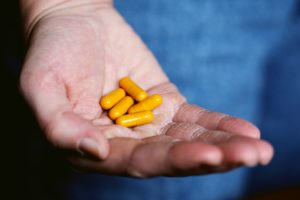
A Brief Overview on Nootropics
Nootropics, also known as smart drugs, are very popular among people who go to the gym. If you visit http://www.athleisuremag.com/the-latest/2021/5/27/how-smart-drugs-can-help-your-gym-performance, you can learn how smart drugs can help with gym performance. Nootropics can be confusing to those who have never heard of them. To help users understand the concept of nootropics, we’ve created a guide and overview. This article provides a brief overview of nootropics, including the definition, risks, how they can be taken together, and the best ways to take them.
What Are Nootropics?
 Nootropics are a class of pharmaceutical agents that can be used to improve cognitive function. They were first discovered in the 1960s. Many nootropics have been shown to improve cognitive learning in key areas. Numerous studies support this claim. Nootropics are a broad spectrum. Therefore, we will list only those extensively studied and shown to improve cognitive abilities.
Nootropics are a class of pharmaceutical agents that can be used to improve cognitive function. They were first discovered in the 1960s. Many nootropics have been shown to improve cognitive learning in key areas. Numerous studies support this claim. Nootropics are a broad spectrum. Therefore, we will list only those extensively studied and shown to improve cognitive abilities.
There is extensive research on nootropics that can be used to treat brain diseases such as multiple sclerosis (MS), Alzheimer’s disease, and Parkinson’s disease. Nootropics are known to protect the brain’s central nervous system from damage.
What Are the Examples of Nootropics?
Some substances affect the central nervous system but are not classified as nootropics, such as nicotine, cannabis, Ritalin, and caffeine. True nootropics are substances that can be considered nutrients rather than drugs. Aniracetam can act as a stimulant or cognitive enhancer in as little as 20 minutes. L-theanine is found naturally in green tea.
It has an anxiolytic effect and aids learning. Piracetam is a nootropic that has been extensively studied to improve cognitive performance. Pramiracetam (a stronger version of Piracetam) is an effective medication for improving memory and learning ability. These medications are safe for the body and have no side effects.
How to Take Nootropics?
 It is important to know that nootropics do not provide a quick fix for optimal cognitive function. Instead, they must be taken in combination with all other aspects of daily life for best results. These include the obvious aspects of a healthy diet rich in essential oils and foods such as vegetables, whole grains, and protein, adequate sleep, exercise, a healthy diet rich in B vitamins for energy.
It is important to know that nootropics do not provide a quick fix for optimal cognitive function. Instead, they must be taken in combination with all other aspects of daily life for best results. These include the obvious aspects of a healthy diet rich in essential oils and foods such as vegetables, whole grains, and protein, adequate sleep, exercise, a healthy diet rich in B vitamins for energy.
You can also combine nootropics to increase their effectiveness. Choline is a common ingredient in a stack. Choline is found naturally in foods such as eggs and nuts. It is also the precursor to acetylcholine (a neurotransmitter found in the brain). This means that choline can be converted to acetylcholine, which is the fuel for cognitive energy and mental potential. The level of choline in the brain decreases as mental performance increases with the help of nootropics. You need to replenish this amount by adding a source of choline to your nootropic mix. (We will discuss the different types and uses of choline in a later article.
What Are the Risk of Taking Nootropics?
Nootropics have no known side effects or risks. It is important to know that excessive intake can cause problems such as stomach upset, gastrointestinal problems, or headaches due to cholinergic depletion, which can be caused by increased brain function. Since every nootropic is different, it is important to know how much you should take.
Conclusion
Nootropics are believed to offer a variety of benefits that can be used in many aspects of life. You should be well informed before feeding your body different types of nootropics. Nootropics can only be effective when used in conjunction with a healthy lifestyle. Nootropics have been shown to improve mental function and can help maintain brain health.
